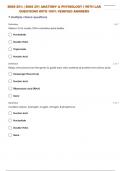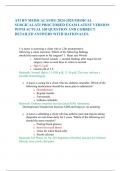Exam (elaborations)
Test Bank for Hamric and Hanson’s Advanced Practice Nursing An Integrative Approach 6th Edition by Mary Fran Tracy, Eileen T. O'Grady All Chapters 1-24 A+
- Course
- Institution
- Book
Test Bank for Hamric and Hanson’s Advanced Practice Nursing An Integrative Approach 6th Edition by Mary Fran Tracy, Eileen T. O'Grady Tracy O’Grady All Chapters 1-24 A+
[Show more]












